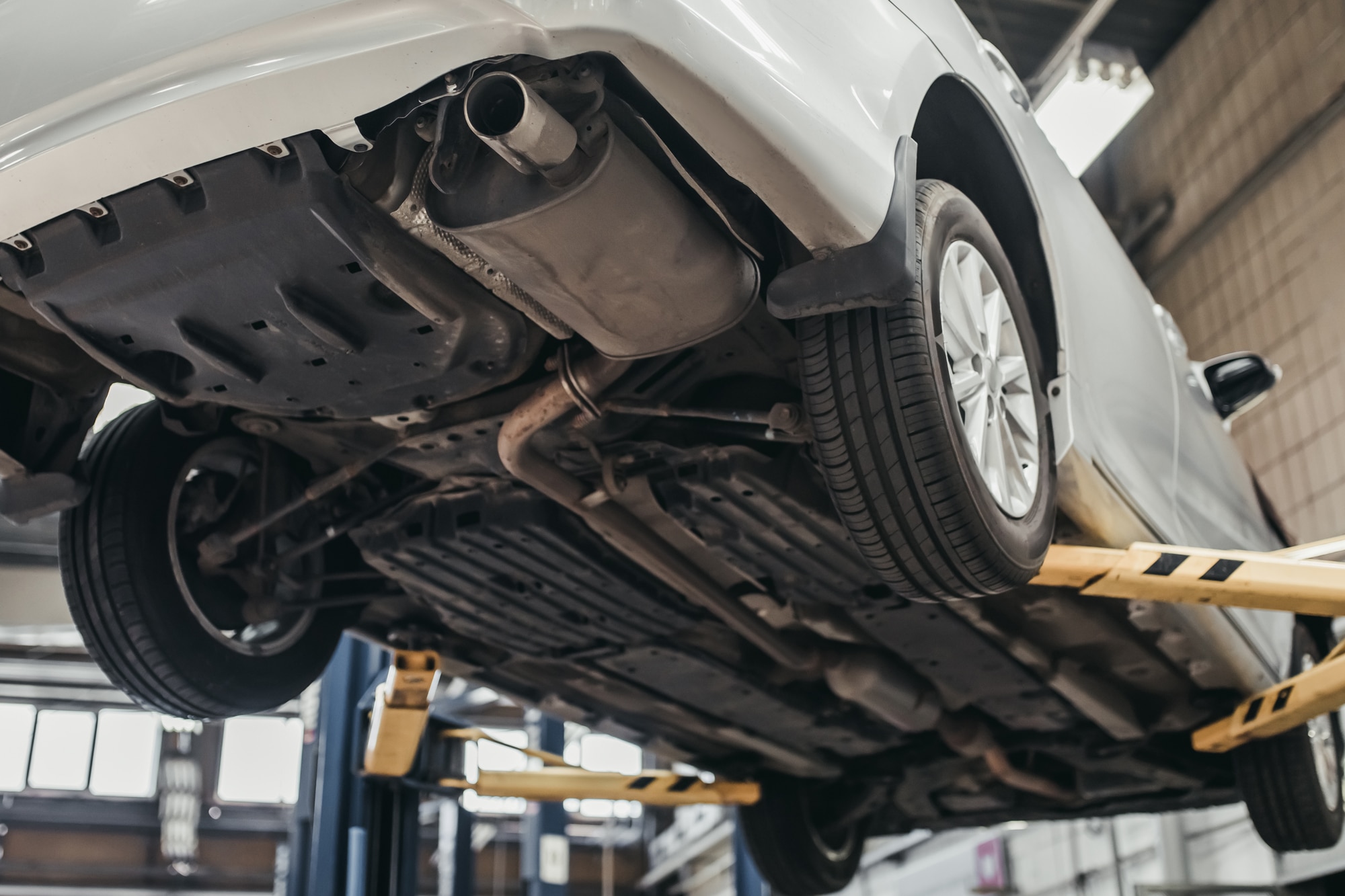Does Undercoating Stop Rust?
Modern rust proofing offers more than one way to protect your car.
 Shutterstock
Shutterstock
Despite major improvements in automotive construction and materials preparation, rust remains a fact of life for motorists who live in cold climates, where road salt is a regular feature on winter roads. Fortunately, an entire industry has sprung up around preventing corrosion and protecting vehicles old and new from the ravages of rust.
But do these modern protective techniques actually prevent rust? Here’s a look at how rust-proofing methods work to protect an automobile.
Installing a Salt Shield
Sometimes the words “undercoating” and “rust-proofing” are used interchangeably, but really there are multiple methods used to add a protective layer between a vehicle’s vulnerable metal and the salt and moisture that lead to corrosion.
“Undercoating” typically refers to the practice of spraying a substance, usually petroleum-based, under a vehicle’s bodywork to coat the chassis and suspension. The advantages of using an oil-like or tar-based undercoating are that the coating can penetrate into small gaps and crevices—the same spots where salt, brine, and water tend to collect—with minimum effort. The oil- or tar-based substance also can soak through any existing surface rust to sit on the metal below, and it often continues to seep several additional inches after it has been applied as gravity pulls it down into channels and seams in the steel.
Where can you get an undercoating sprayed? Many independent mechanics provide this service during the fall season, and most new- and used-car dealerships also offer it. Prices vary depending on where the service is performed and the type of vehicle. Leading rust-proofing brand Krown, for example, charges about $140 for a car the size of a Honda Civic and about $160 for an SUV the size of a Cadillac Escalade.
Comprehensive Coverage
Not all oil-based rust-proofing techniques are restricted to a car’s underside, however. It’s also possible to target other vulnerable body panels and components with the same type of coating and achieve similar levels of protection. This is the model for companies like Krown and Ziebart, both of which operate out of franchised, standalone locations. During a service appointment, the products are applied to the interior of a vehicle’s tailgate, doors, rocker panels, and other areas.
This is a more involved operation than a salt shield, and occasionally involves light disassembly or the drilling of tiny access holes for spray equipment, which means the price tag is higher than a simple undercoating. Still, the resulting protection is much closer to comprehensive, and often necessary for climates where excessive levels of road salt are a fact of life.
Solid Barrier Options
There are other types of undercoating that are typically offered when a vehicle is brand new. Some dealers offer a wax or rubberized undercoating that provides a solid barrier between salt and metal—this has advantages and disadvantages. A solid covering can only be applied on a brand-new model (to prevent accidentally covering existing rust or grime). Additionally, any scrapes, nicks, or cuts that occur over time in a hard covering can let in moisture and salt, trapping them against the chassis and potentially accelerating rust, whereas an oil-based undercoating flows into any abrasions that might result from normal driving. For this reason, oil-based undercoating is often suggested as a secondary step even after the application of a solid barrier.
Rust-proofing jobs—particularly the non-rubberized type—often are performed annually to slow or prevent rust damage. Companies like Ziebart offer warranties for their rust-prevention services. Although it’s impossible to eliminate corrosion entirely, taking precautions can extend your vehicle’s time without rust.
Written by humans.
Edited by humans.
 Benjamin Hunting
Benjamin HuntingNearly two decades into his career as an automotive journalist, Benjamin has had his hands greasy, his hair blown back, and his heart broken by more than one project car. In addition to his work at Capital One, he has contributed features and reviews to Motor Trend, Car and Driver, Hagerty, Driving Line, Inside Hook, Super Street, European Car, Roadkill Magazine, Motor 1, The Drive, the Toronto Star, the National Post, Business Insider, NAPA, Autoblog, Automotive News Canada, and AutoGuide. He is also cohost of the Unnamed Automotive Podcast and cocreator of the Code 45 and Dead Air graphic novels. In his spare time, he's a friend to vinyl and enjoys keeping the shiny side up during track days.
Related articles
View more related articles